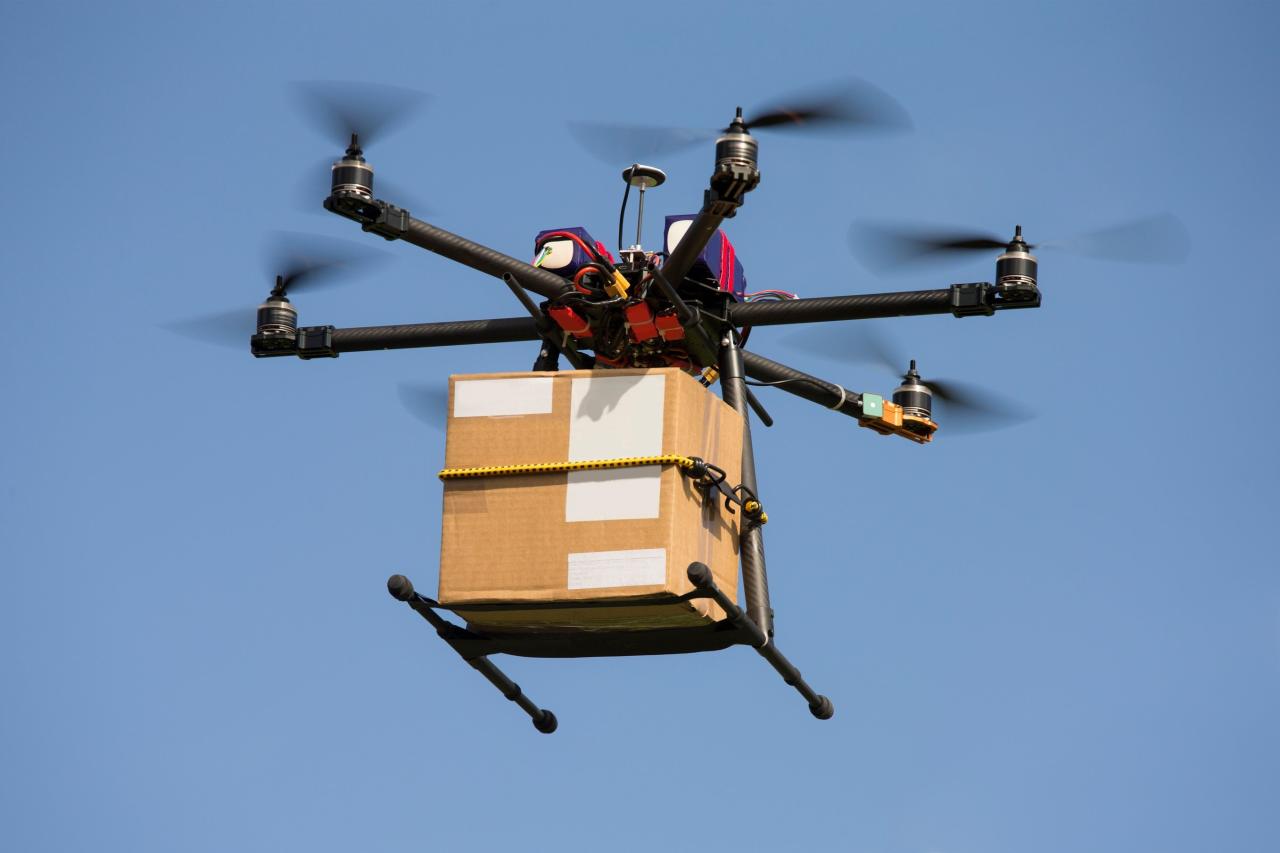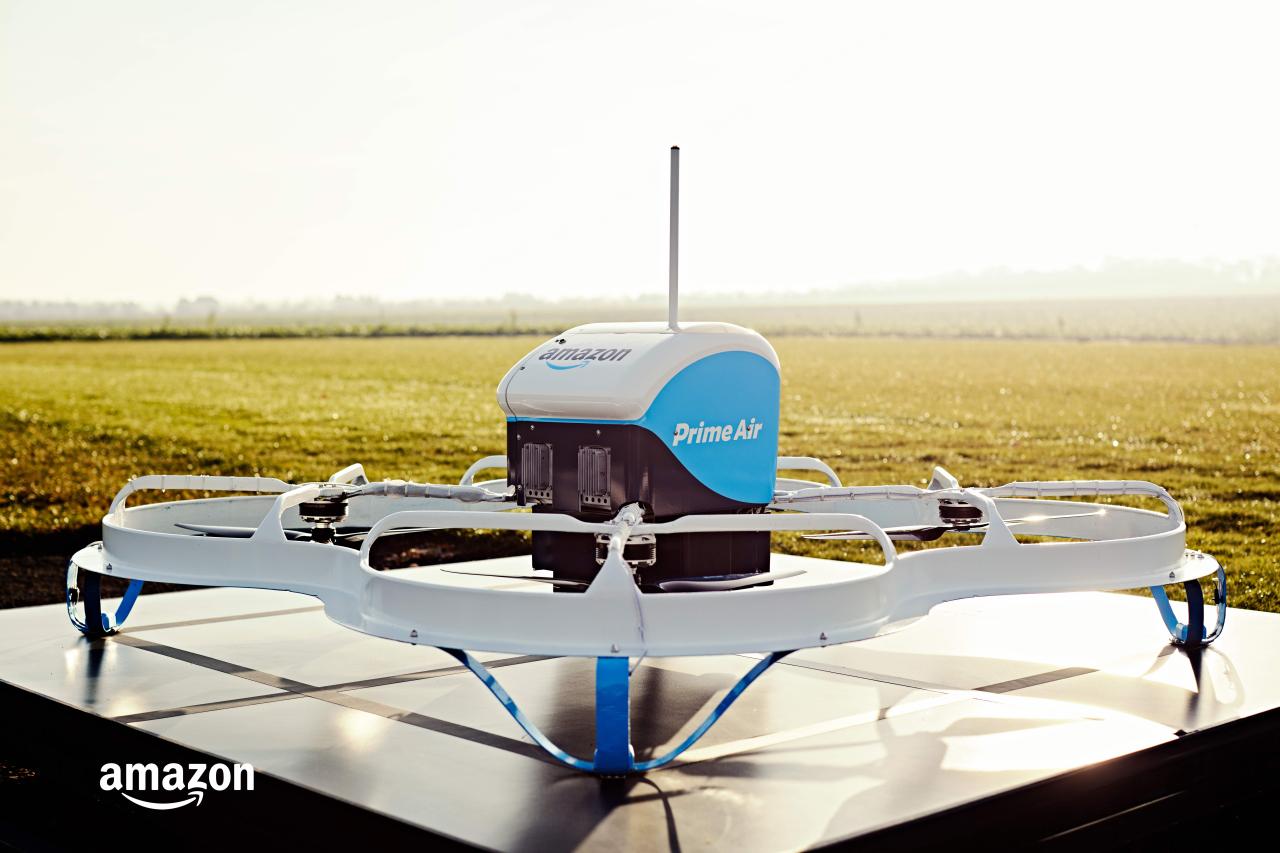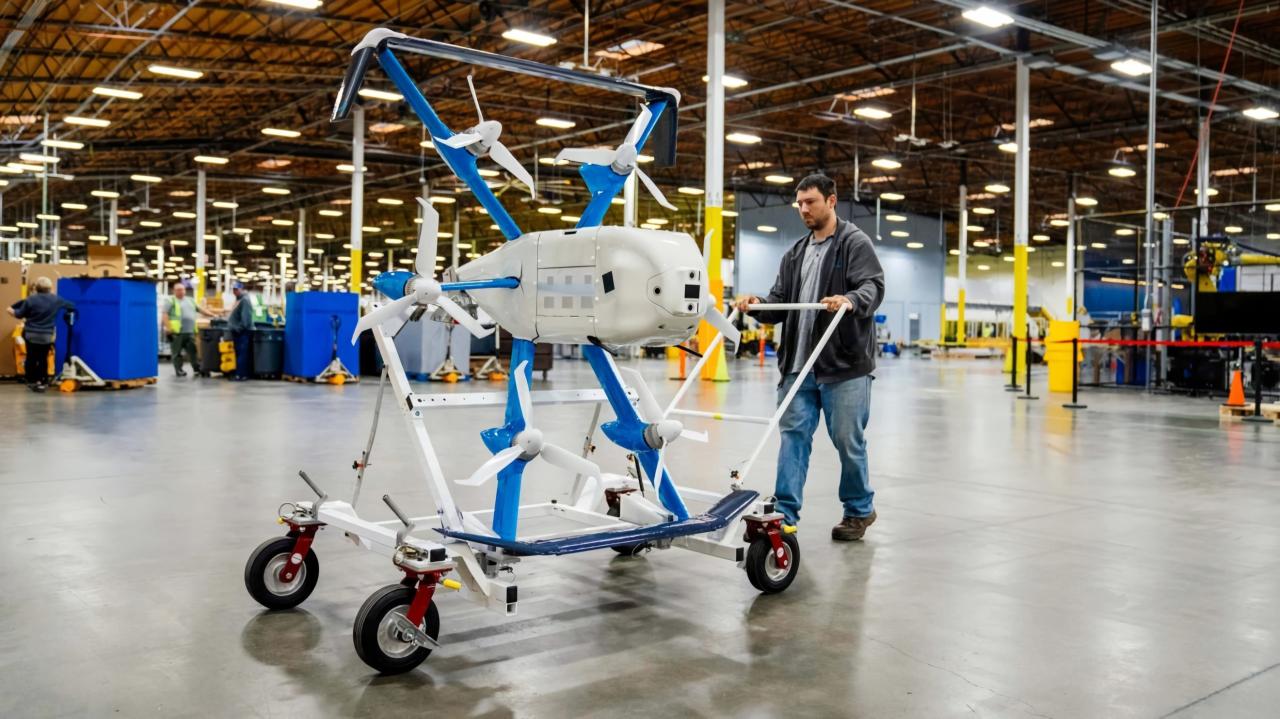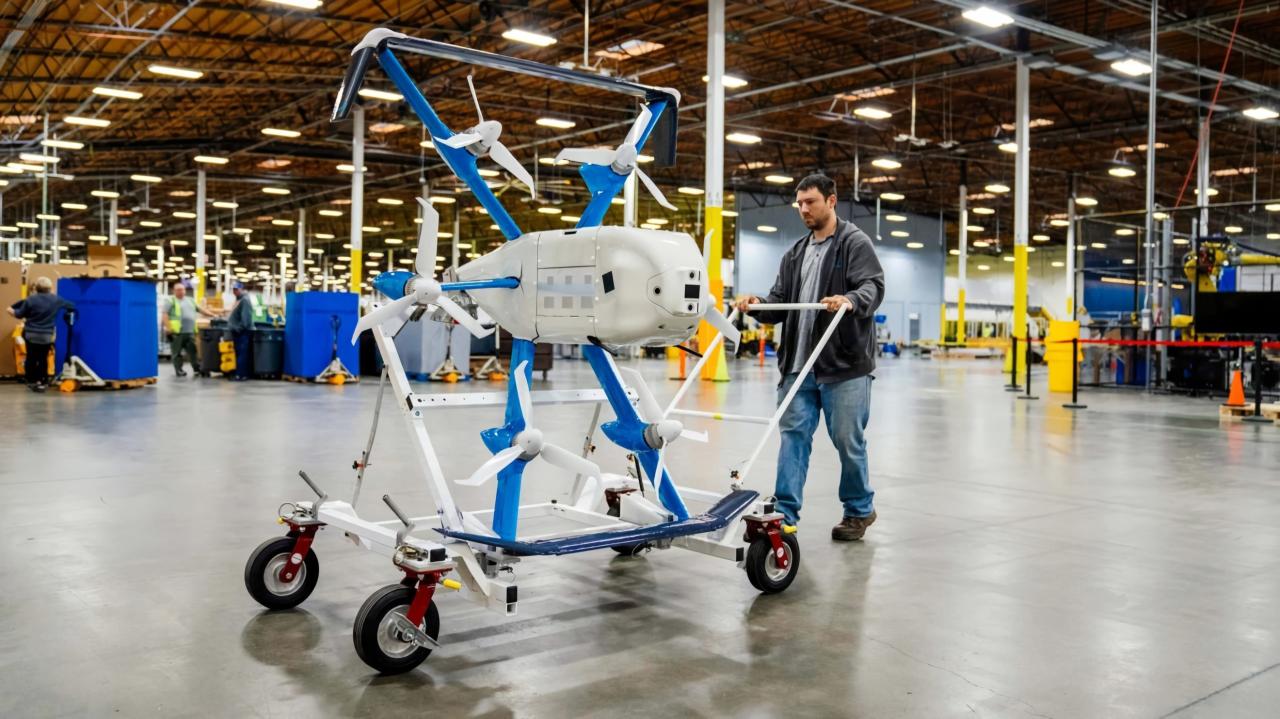Amazon drone delivery locations are rapidly expanding, marking a significant shift in the e-commerce landscape. This exploration delves into the current status, logistical considerations, customer experiences, future expansion plans, and environmental impact of Amazon’s ambitious drone delivery program. We’ll uncover the factors influencing location selection, from regulatory hurdles to community acceptance and technological advancements. Get ready for a detailed look at this innovative delivery system!
We’ll examine the types of goods currently eligible for drone delivery, compare delivery times and costs against traditional methods, and explore the technological infrastructure supporting this operation. We’ll also discuss the challenges and opportunities related to customer satisfaction, potential future expansion into new markets, and Amazon’s strategies for minimizing the environmental footprint of drone deliveries.
Amazon’s expanding drone delivery network is aiming for more locations, but safety is key. Recent incidents highlight the need for robust systems; for example, check out this report on a drone crash in Paris to see the potential consequences. Understanding these risks helps Amazon refine its delivery locations and improve safety protocols for future expansion.
Amazon Drone Delivery: A Deep Dive
Amazon’s drone delivery program represents a significant shift in the logistics landscape, promising faster and more efficient deliveries. This article examines the current state of the program, its expansion plans, and the factors influencing its development and implementation.
Current Amazon Drone Delivery Program Status
Amazon’s drone delivery service, officially known as Amazon Prime Air, is currently operational in select locations across the United States. The program’s geographic scope is limited, focusing on areas with favorable airspace and infrastructure, and where regulatory approvals have been secured. The types of goods eligible for drone delivery are primarily lightweight packages, typically weighing under 5 pounds, and encompassing a range of products from everyday essentials to small electronics.
The technological infrastructure supporting Amazon Prime Air is sophisticated, involving a network of drone hubs, advanced drone technology capable of autonomous flight and package delivery, and sophisticated software for flight management and order tracking. This system relies on GPS, sensors, and communication networks to ensure safe and efficient deliveries.
| Method | Average Delivery Time | Cost | Advantages/Disadvantages |
|---|---|---|---|
| Drone Delivery | 30 minutes – 1 hour | Comparable to or slightly higher than standard shipping | Advantages: Speed, convenience; Disadvantages: Limited geographic reach, weight restrictions |
| Traditional Delivery (Ground) | 1-5 days | Generally lower than drone delivery | Advantages: Wide geographic reach, handles larger and heavier packages; Disadvantages: Slower delivery times, less convenient |
Factors Influencing Drone Delivery Location Selection, Amazon drone delivery locations

Several key factors influence Amazon’s selection of drone delivery locations. Logistical considerations include population density (sufficient customer base), existing infrastructure (suitable launch and landing areas, strong communication networks), and airspace regulations (availability of designated airspace for drone operations). Regulatory approvals from the Federal Aviation Administration (FAA) are essential, along with community acceptance to ensure safe and smooth operations.
Weather conditions significantly impact drone operations; locations with favorable weather patterns are prioritized to minimize delays and ensure delivery reliability.
Amazon’s expanding drone delivery network is aiming for wider coverage, but safety is paramount. Recent incidents like the drone crash in Paris highlight the challenges involved in widespread drone operations. This emphasizes the need for robust safety protocols and reliable technology as Amazon continues to identify suitable locations for its drone delivery services.
The decision-making process for selecting new drone delivery locations can be visualized as follows:
Flowchart (Descriptive Text):
Start -> Assess Population Density -> Evaluate Infrastructure -> Check Airspace Regulations -> Obtain Regulatory Approvals -> Secure Community Acceptance -> Analyze Weather Patterns -> Feasibility Assessment (Yes/No) -> Yes: Launch Drone Delivery Operations; No: Re-evaluate Criteria -> End
Customer Experience and Drone Delivery
Customer feedback on Amazon’s drone delivery service has been largely positive, with many praising the speed and convenience. The customer communication process involves real-time tracking updates through the Amazon app, providing visibility into the drone’s location and estimated delivery time. Compared to traditional delivery methods, drone delivery offers a significantly faster and more convenient experience, especially for time-sensitive items.
However, challenges remain in ensuring consistent service across various weather conditions and expanding geographic reach.
- Potential Challenges: Weather-related delays, limited package size and weight, potential for accidents or technical malfunctions, public perception and acceptance.
- Potential Opportunities: Improved delivery speed and efficiency, reduced delivery costs, expansion into underserved areas, enhanced customer satisfaction.
Future Expansion of Amazon Drone Delivery

Amazon plans to significantly expand its drone delivery network in the coming years. This includes expanding into new markets both domestically and internationally, targeting areas with high population density and strong e-commerce demand. Technological advancements such as improved battery technology, more sophisticated autonomous navigation systems, and enhanced drone payload capacity are crucial for wider adoption.
Future Drone Delivery Hub (Descriptive Text): A future drone delivery hub might resemble a small, automated warehouse equipped with charging stations, automated package sorting systems, and sophisticated weather monitoring equipment. The hub would be strategically located to minimize flight times and optimize delivery routes, incorporating features for enhanced security and drone maintenance. It would be designed for efficient and sustainable operations, minimizing its environmental footprint.
So you’re curious about where Amazon’s delivering packages via drone? They’re testing in various locations, constantly expanding their reach. To get a better understanding of the tech behind this, check out the innovative drone designs from sky elements drones , which offer insights into the engineering challenges and solutions involved. This helps understand how sophisticated these delivery systems are becoming, impacting future Amazon drone delivery locations.
Environmental Impact of Amazon Drone Delivery

The environmental impact of drone delivery is a complex issue. While drones can reduce carbon emissions compared to traditional delivery trucks, particularly in densely populated areas, they also introduce noise pollution. Amazon is actively exploring strategies to minimize the environmental footprint of its drone operations, including the use of electric drones and optimization of flight paths to reduce energy consumption.
Electric drones offer a more sustainable alternative to gasoline-powered drones, reducing greenhouse gas emissions and noise pollution. Optimizing drone flight paths, through advanced route planning software, can further minimize energy consumption and reduce the overall environmental impact.
Ending Remarks: Amazon Drone Delivery Locations
Amazon’s drone delivery program represents a bold step towards faster, more efficient, and potentially more environmentally friendly deliveries. While challenges remain, the potential benefits are immense. As technology advances and regulations evolve, we can expect to see a significant expansion of Amazon’s drone delivery network, transforming the way we receive our online purchases. The future of delivery is in the air, and it’s taking flight faster than you might think!
Expert Answers
What is the weight limit for Amazon drone deliveries?
The weight limit varies depending on the drone model and regulations, but generally, it’s limited to packages under a certain weight, often around 5 pounds.
How do I know if drone delivery is available in my area?
Check the Amazon website or app during checkout. Drone delivery will be an option if it’s available at your address.
What happens if the weather is bad and my drone delivery is scheduled?
Amazon’s drone delivery system is weather-dependent. In inclement weather, the delivery will be delayed or switched to a traditional delivery method.
Are there any restrictions on what items can be delivered by drone?
Yes, certain items, such as hazardous materials or oversized packages, are typically not eligible for drone delivery.
